Yes, Sunstone can go in water. Use distilled water and mild detergent to cleanse Sunstone.
Sunstone’s shimmering beauty captivates everyone. Sunstone is a unique gemstone revered throughout history for its vibrant colors and brilliant aventurescence. Sunstone has been used for various purposes, from adornment to healing rituals, and is believed to possess a multitude of benefits.
In this blog post, we will explore everything you need to know about Sunstone, including the important question: can Sunstone go in water? We will also discuss its cleansing and charging methods, jewelry considerations, and more.
Key Takeaways
- Sunstone is Safe in water, but caution should be taken when exposed to it for prolonged periods.
- It is recommended to utilize distilled water and a mild detergent for cleaning Sunstone, avoiding harsh chemicals.
- Sunstone can provide physical and spiritual benefits such as balance energies, restore happiness and enhance self expression. It should be placed in indirect sunlight or gentle moonlight to charge its healing properties.
Is Sunstone water safe?
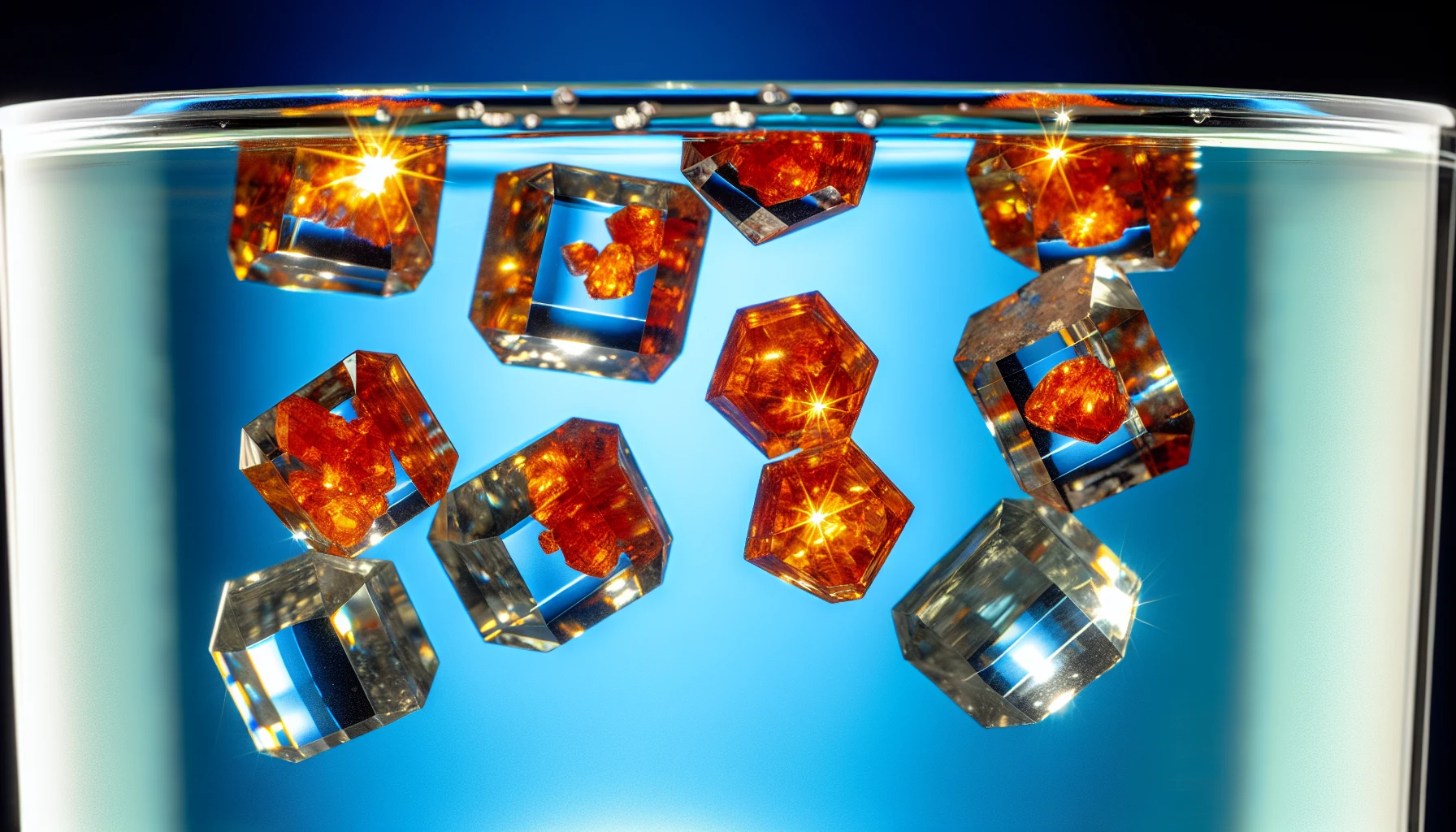
Sunstone is generally considered safe in water, making it a versatile gemstone that can be used in various applications. Both orthoclase and oligoclase sunstones can be safely submerged in water without causing damage. However, caution is recommended with prolonged exposure as this may impact the stone’s polish luster.
Despite this, Sunstone remains a resilient and durable gemstone that can withstand water exposure, allowing you to fully enjoy its beauty and healing properties.
Sunstone and Water Exposure: What You Need to Know
While Sunstone can handle water exposure without damage, one must be wary of potential contaminants and algae buildup that might result from a prolonged sunstone soak. Acidic water and heavy tap water should also be avoided to preserve the stone’s natural energy cycle and overall quality.
Subsequent sections will cover the impact of water on Sunstone, concerns related to prolonged exposure, and practices for safe water exposure.
Effects of Water on Sunstone
While water doesn’t inherently damage Sunstone, care must be taken regarding the type of water and duration of exposure. For example, orthoclase Sunstone can be immersed in acidic water without sustaining any harm. Sunstone can also be submerged in water or wiped down with tap water without any detriment to the stone. However, extended exposure to sunlight and heat may lead to slight discoloration of colors in certain cases, which may affect sunstone healing properties.
Prolonged Exposure Concerns
Extended water exposure may result in algae growth and contamination of the stone, a phenomenon also observed in rose quartz and smoky quartz. To prevent this, avoid soaking Sunstone for extended periods and ensure proper storage when the stone is not in use.
Heavy tap water should also be avoided, as it may cause a film to form on the Sunstone’s surface. The film can be eliminated with a light wiping using distilled water.
Safe Water-Exposure Practices
For cleaning Sunstone, using distilled water and a mild detergent is advisable. Harsh chemicals, ultrasonic and steam cleaners should be avoided, as they can potentially damage the stone.
Adhering to these safe water-exposure practices keeps your Sunstone clean and devoid of any negative energies.
The Science Behind Sunstone
Sunstone, also known as natural Sunstone, is a type of feldspar with a salt-based chemical composition, making it a unique and fascinating sunstone gemstone. Its aventurescence, or glittering effect, is due to metallic inclusions within the Sunstone crystal, which catch the light and create a visually stunning appearance. Sunstone crystals, being a part of this gemstone family, share these remarkable characteristics.
The subsections below will provide a deeper understanding of Sunstone’s chemical composition and structural features.
Chemical Composition
Sunstone’s chemical composition includes elements like sodium, calcium, and potassium, which contribute to its unique appearance and properties. The molecular structure of Sunstone is described by the chemical formula KAlSi3O8. The presence of varying amounts of copper or hematite inclusions in the feldspar contributes to the color and shimmer of sunstone.
Despite some potential variations in composition based on its mining location, sunstone, a rare stone, along with other orange stones like lapis lazuli, remains a consistently beautiful and sought-after gemstone.
Structural Features
Sunstone’s structural features include reflective inclusions that create a glittering effect, making it a visually stunning gemstone. The inclusions may comprise copper, hematite, and other metallic elements that are trapped in the formation of the sunstone. These inclusions create a phenomenon known as aventurescence, which adds to the stone’s unique appeal and value.
With its captivating appearance and intriguing structural features, sunstone is truly a gemstone worth admiring.
How to Cleanse Sunstone?
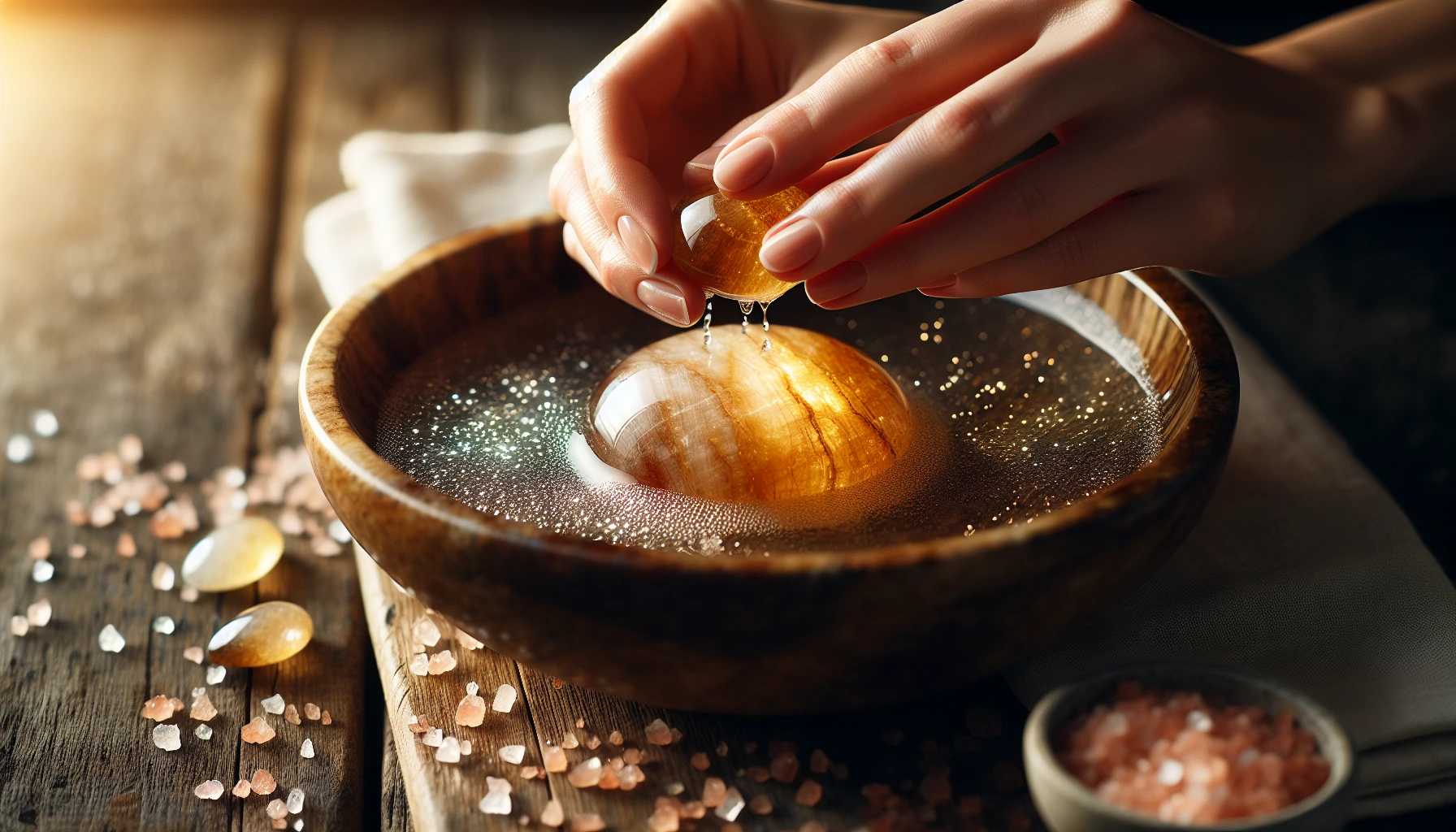
Maintaining your sunstone’s cleanliness and purity is key to leveraging its healing properties and vibrant energy fully. The subsequent sections will cover gentle cleaning techniques and alternative cleansing methods to keep your Sunstone at its best.
Gentle Cleaning Techniques
To clean Sunstone, it’s recommended to use distilled water and a mild detergent, such as unscented washing up liquid or a few drops of mild detergent combined with warm water. Popular brands of mild detergent recommended for cleaning sunstone include Joy, Ivory, Dawn, Seventh Generation, Ecover, and Dishmate.
The distilled water should be warm when cleaning sunstone, and care should be taken to avoid harsh chemicals and high heat during the cleaning process.
Alternative Cleansing Methods
Saltwater, moonlight, or smudging with sage or other cleansing herbs are alternative methods to cleanse Sunstone. Sunstone can be cleansed by immersing it in a bowl of salt for 24 hours, as salt will not cause any damage to the stone.
Burying sunstone in a handful of dried herbs such as sage can be a gentle and effective method of cleansing as well. When dealing with raw sunstone or sunstone with numerous fissures, it is suggested to wrap the crystal in cloth before burying it or simply rinse it afterward to rectify any potential issues.
How to Charge Sunstone?
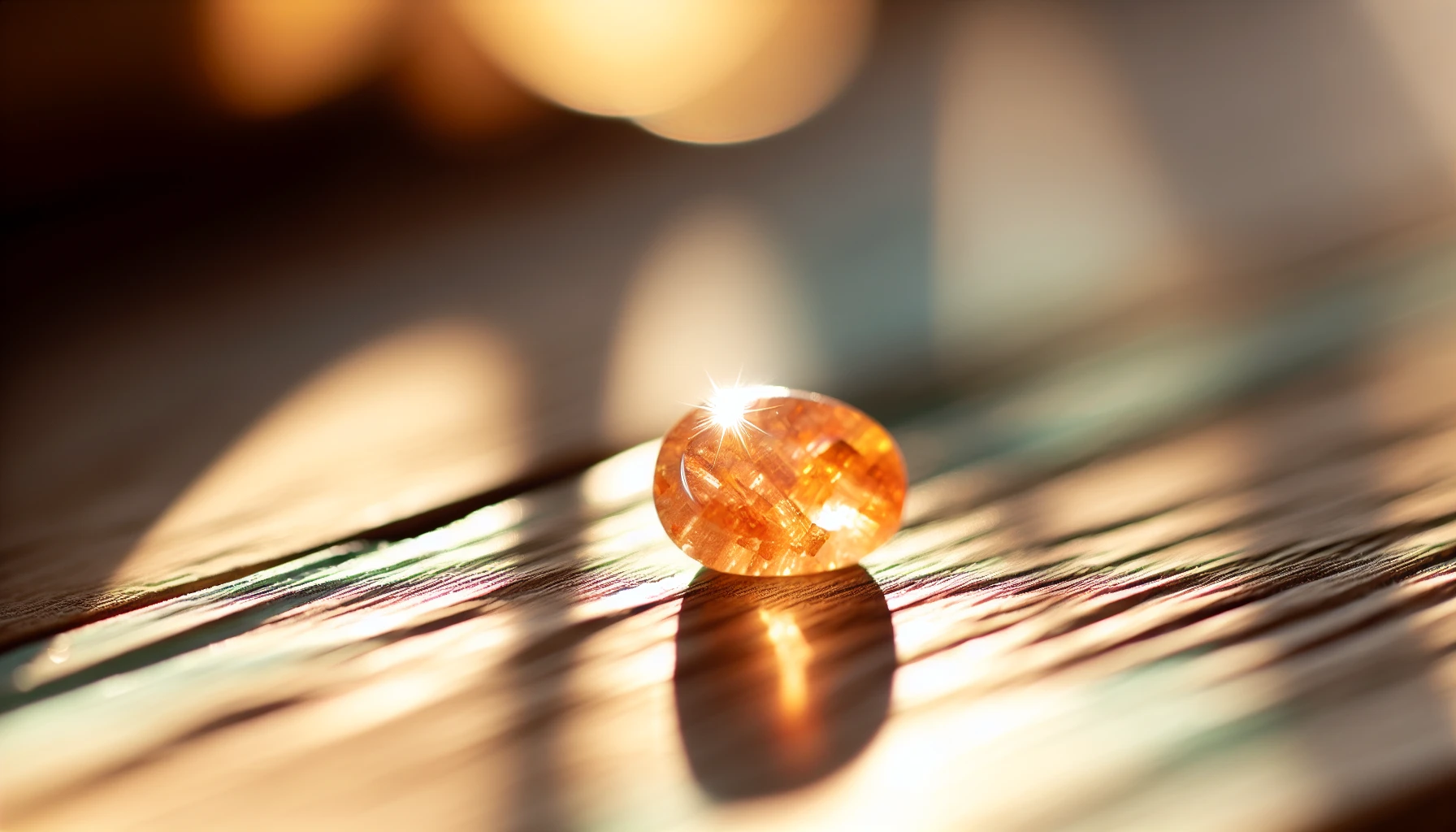
Charging Sunstone can amplify its healing properties and boost its overall energy. Sunstone can be charged by exposing it to gentle sunlight or full moonlight, allowing it to absorb the natural energy from these sources. Charging Sunstone in sunlight yields a more potent and invigorating energy, whereas charging it in moonlight produces a soothing and tranquil energy.
The selection between the two charging methods is contingent upon the desired intention and purpose for the charged sunstone.
Sunstone Care Tips
Taking proper care of your Sunstone ensures its longevity and keeps its vibrant energy intact. The following sections will cover protective measures and preventive maintenance to keep your sunstone looking pristine and functioning optimally.
Protective Measures
To protect your Sunstone from scratches and damage, it’s important to:
- Use protective settings in jewelry
- Store sunstone separately from other gemstones
- Bezel settings are recommended for sunstone protection
- Avoid rings with protective settings in favor of pendants, earrings, and pins.
Additionally, storing Sunstone separately from other gemstones can help to prevent potential scratching, as Sunstone can be susceptible to scratching from materials such as dust and quartz.
Preventive Maintenance
Regularly cleaning and inspecting your Sunstone for damage is an essential aspect of proper Sunstone care. Harsh chemicals and high heat should be avoided during the cleaning process, and a mild soap and warm water solution is recommended for cleaning sunstone jewelry.
It is also important to avoid wearing Sunstone during any vigorous physical activity, such as exercising, to prevent potential damage.
Sunstone Uses and Benefits
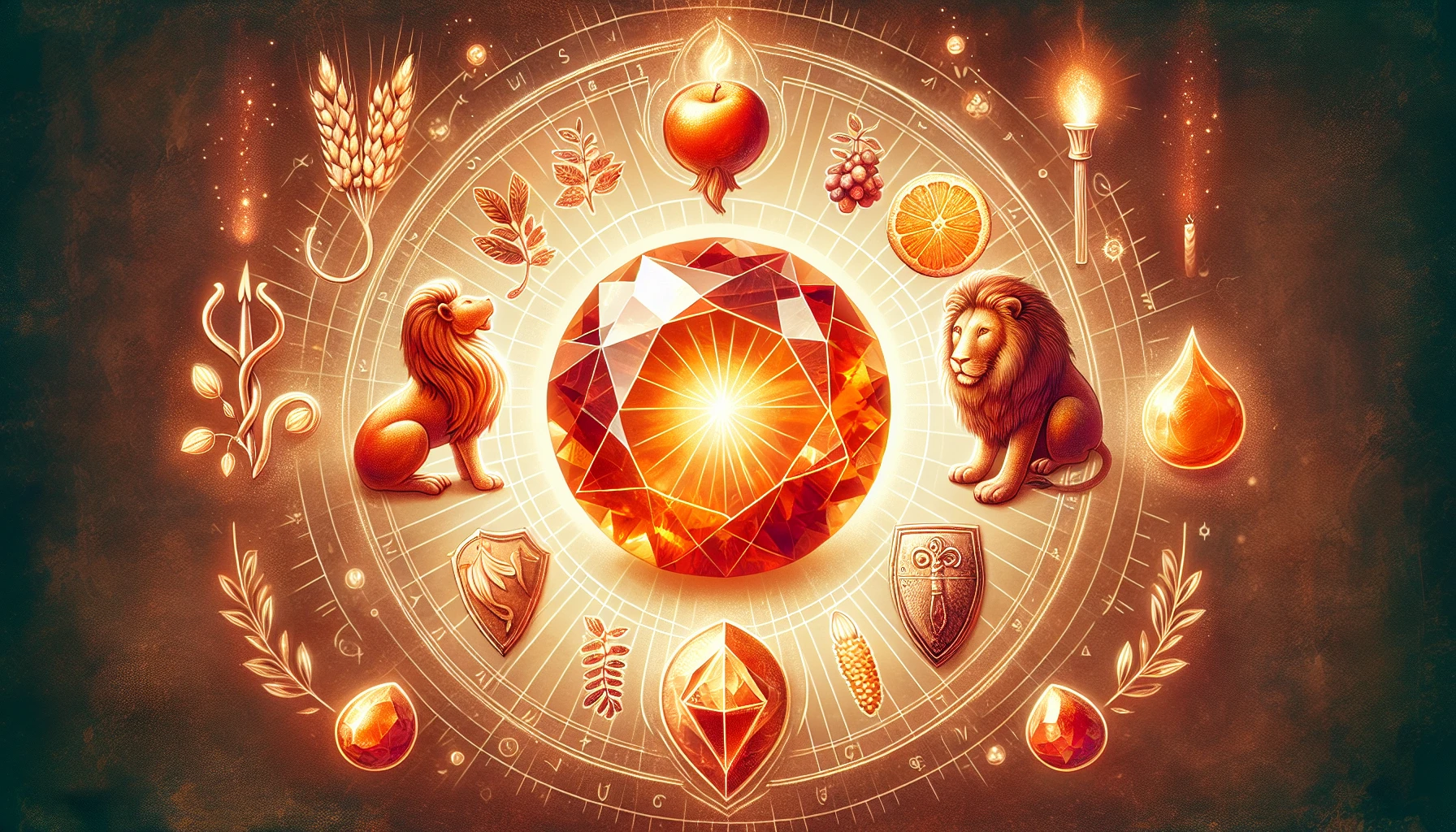
Sunstone, rich in healing properties and culturally significant in various traditions, symbolizes abundance, inner power, and protection. Subsequent sections will delve into the healing properties and symbolism of Sunstone, examining how this unique gemstone can enrich our lives physically and spiritually.
Healing Properties
Sunstone is believed to have the following benefits:
- Balancing energies
- Restoring happiness
- Aiding in physical ailments like sore throat and stomach ulcers
- Increasing energy levels
- Enhancing self-expression
- Inspiring courage
- Facilitating energy balance
- Transforming negative emotions such as anger and judgment into positive energy and joy
Furthermore, Sunstone is believed to activate the sacral chakra, which is associated with pleasure, creativity, and emotional equilibrium.
Symbolism and Cultural Significance
Sunstone, including the unique Oregon sunstone, has been used in Greek, Nordic, and Native American cultures, as sunstone represents the sun and masculine healing properties. Ancient Greeks and Egyptians believed that sunstone possessed the energy of creation from the Sun God Ra, while Native Americans considered it to contain the blood of ancient warriors and used it for medicinal purposes.
By embodying the masculine energy of yin, sunstone signifies strength, harmony, and passion, making it a powerful symbol in various cultural contexts.
Sunstone Jewelry Considerations
When adding Sunstone to your jewelry collection, considering complementary gemstones and appropriate jewelry settings and care is important.
The following sections will examine:
- How Sunstone pairs with other gemstones
- Various jewelry setting options
- Care tips to ensure your Sunstone jewelry remains stunning and vibrant for years.
Complementary Gemstones
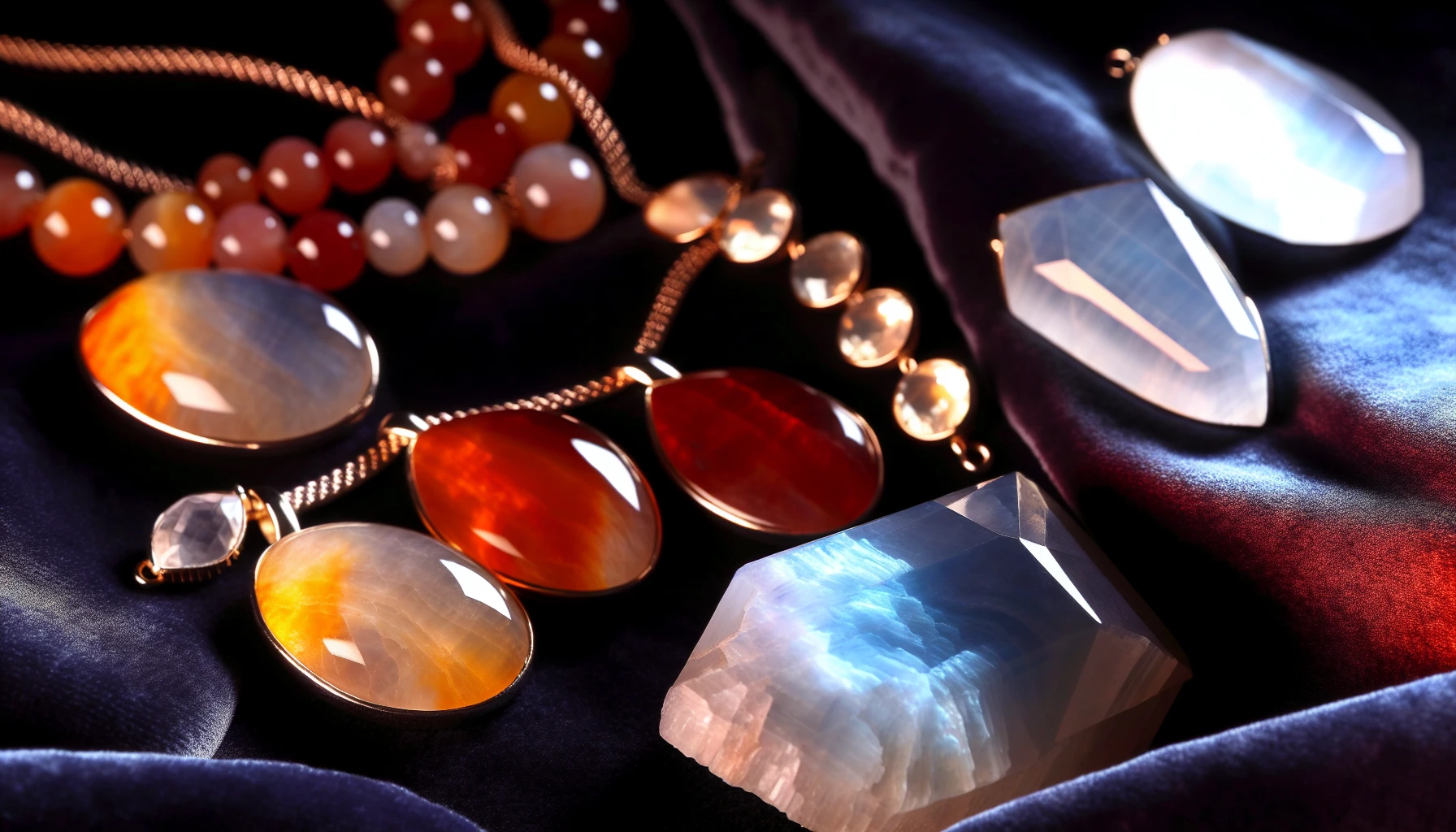
Sunstone and moonstone create a balance of divine male and female energies when worn together, promoting harmony and emotional healing. In addition to moonstone, Sunstone is compatible with other gemstones such as:
- Citrine
- Carnelian
- Labradorite
- Clear Quartz
- Sugilite
- Selenite
- Fluorite
- Amethyst
This allows for beautiful and meaningful jewelry combinations that enhance the healing properties of each stone.
Jewelry Settings and Care
Choosing protective settings for sunstone jewelry is essential to maintain its beauty and prevent damage. Bezel settings are recommended for Sunstone protection, and it’s important to clean Sunstone jewelry regularly with a gentle water and detergent solution to keep it looking its best.
By following these jewelry setting and care tips, you can ensure your Sunstone jewelry remains a cherished addition to your collection.
Know More About Sunstone
Having explored various aspects of Sunstone, you might be interested in additional information, such as whether Sunstone can be placed in the sun, how to identify a real Sunstone, or how to wear Sunstone.
The following sections will address these questions and offer further insights into this remarkable gemstone, including its position on the Mohs hardness scale.
Can Sunstone be in the Sun?
Sunstone is safe in gentle sunlight, but it’s important to avoid full daylight to maintain its natural energy cycle and prevent any potential damage to the stone. Placing Sunstone in indirect sunlight or gentle sunlight for a few hours can help to charge the stone and enhance its healing properties without causing harm.
How to Tell if Sunstone is Real?
To determine if a Sunstone is real, check for the following characteristics:
- A shimmering glow in the sun
- The presence of gold/copper flecks within the stone
- A spangled appearance when viewed from certain directions
- Hematite or goethite inclusions that reflect light and create a sparkling sheen
These features indicate that the Sunstone is genuine.
By examining your Sunstone for these characteristics, you can ensure that you have a genuine and valuable gemstone in your possession.
Summary
In conclusion, Sunstone is a unique and powerful gemstone with a multitude of uses and benefits. From its water safety and cleansing methods to its healing properties and cultural significance, sunstone offers a myriad of ways to enhance our lives and promote balance, happiness, and well-being. With proper care and attention, your sunstone can remain a cherished and vibrant addition to your collection for years to come.
Frequently Asked Questions
Can Sunstone be washed?
Sunstone can be washed with warm soapy water and a soft-bristled toothbrush. Ultrasonic, steam cleaners and cleaning products containing bleach should be avoided to avoid damage to the gemstone.
How can you tell if a Sunstone is real?
To tell if a Sunstone is real, examine it for cracks, scratches, and black spots. Consult an experienced gemologist to verify its authenticity. Genuine Sunstones tend to have inclusions that resemble tiny flecks of gold and the color should be consistent throughout the stone. Additionally, most sunstones have yellow, orange, or brown body color with green being extremely rare.
How do you charge Sunstone?
Charge Sunstone by leaving it out under the sun for a few hours or placing it under a full moonlight for 4 hours or longer, or you can also cleanse and activate its energy with running water. To restore its energy, it can also be kept in company of other crystal clusters.
Can Sunstone be worn everyday?
Sunstone is suitable for daily wear, as long as it is handled with care.
What are the healing properties of sunstone?
Sunstone has powerful healing properties, helping to balance energies, restore happiness, and even treat physical ailments such as sore throat and stomach ulcers.